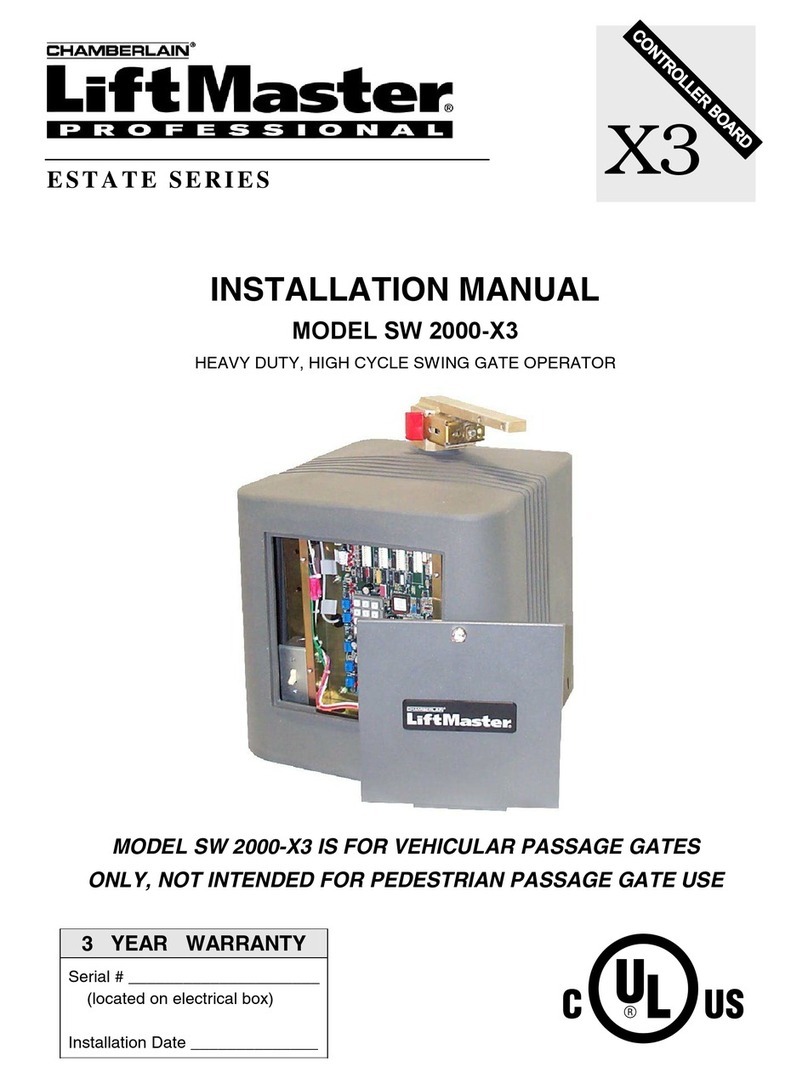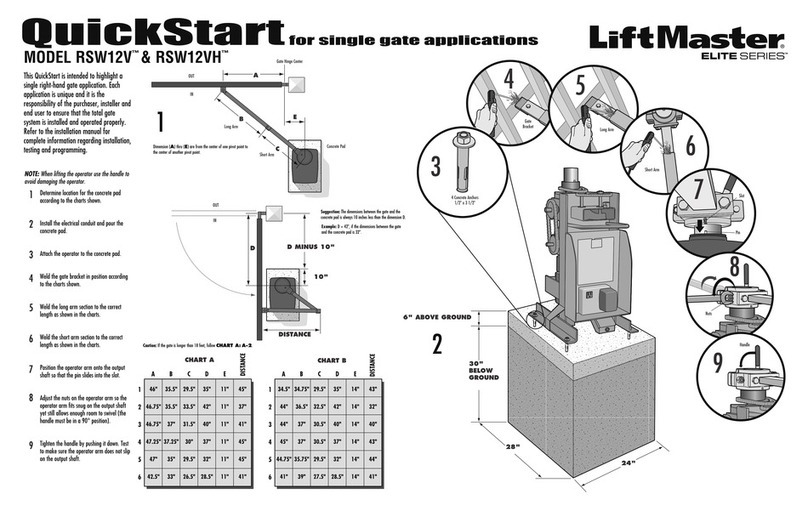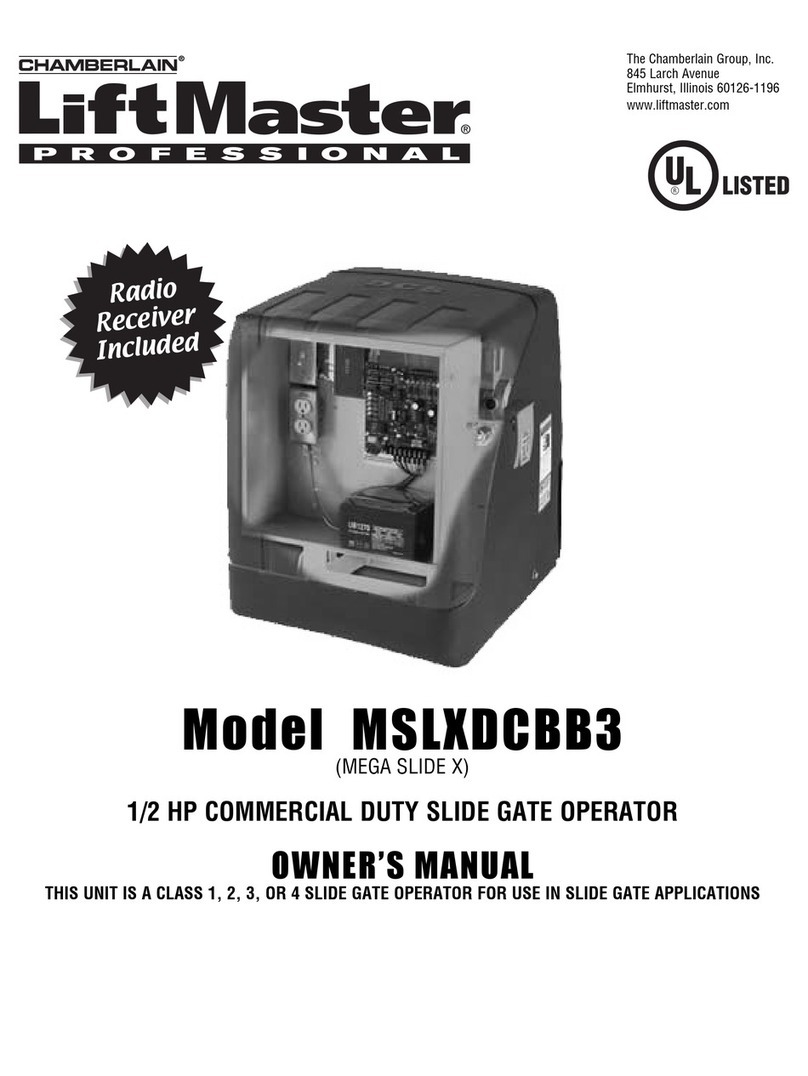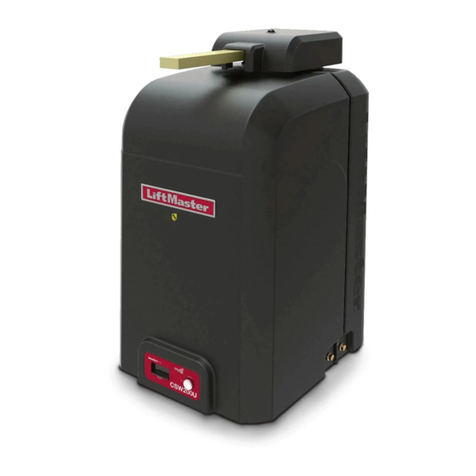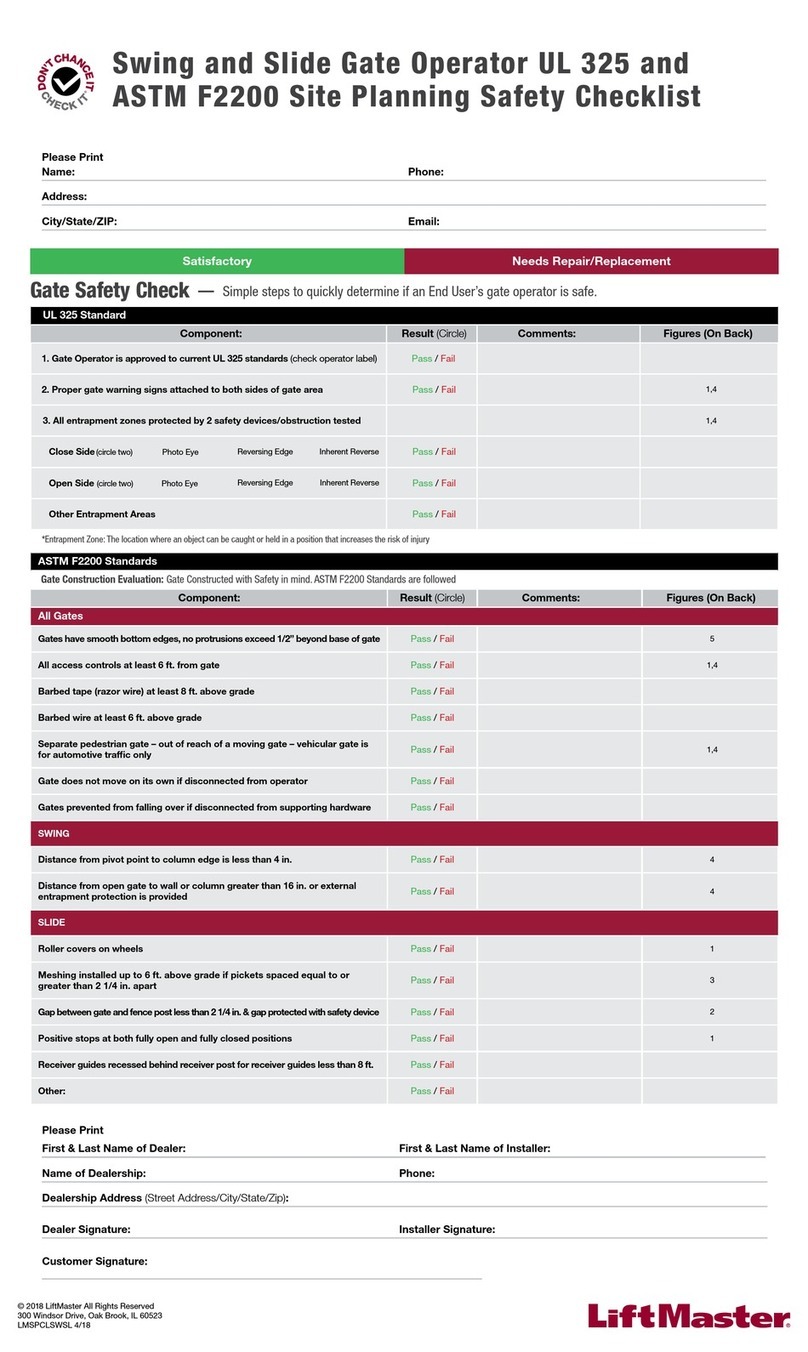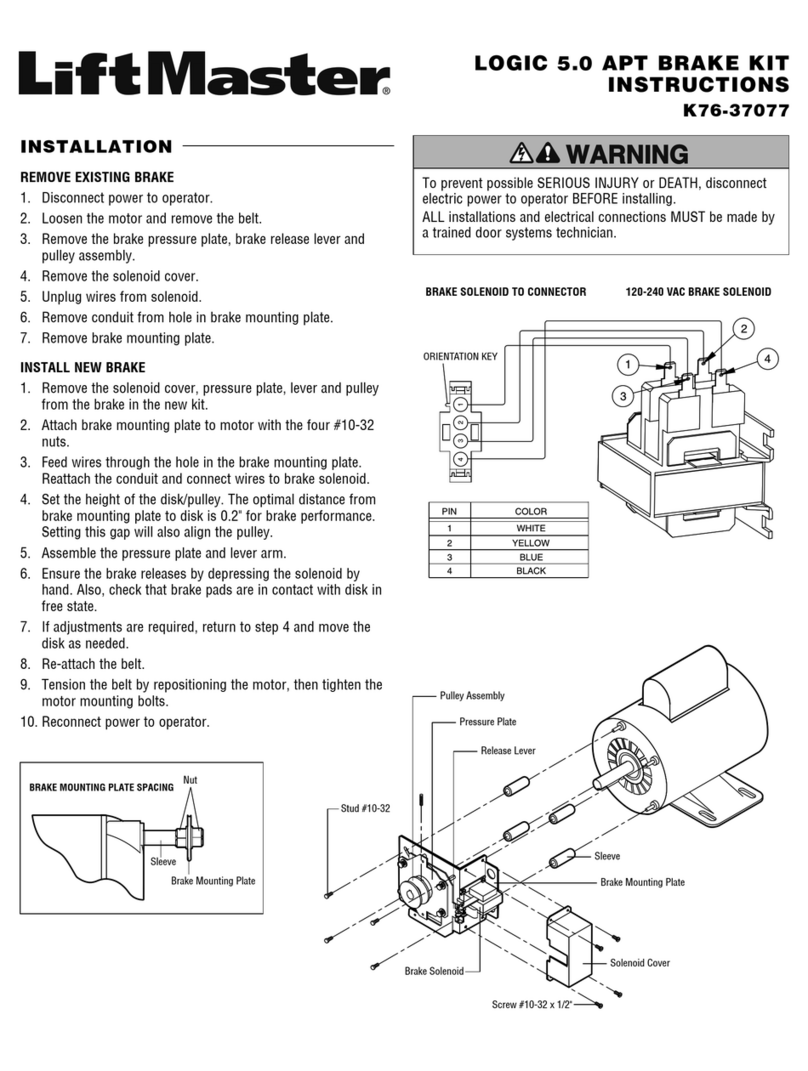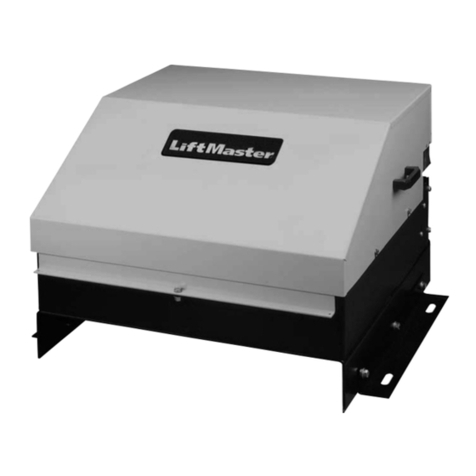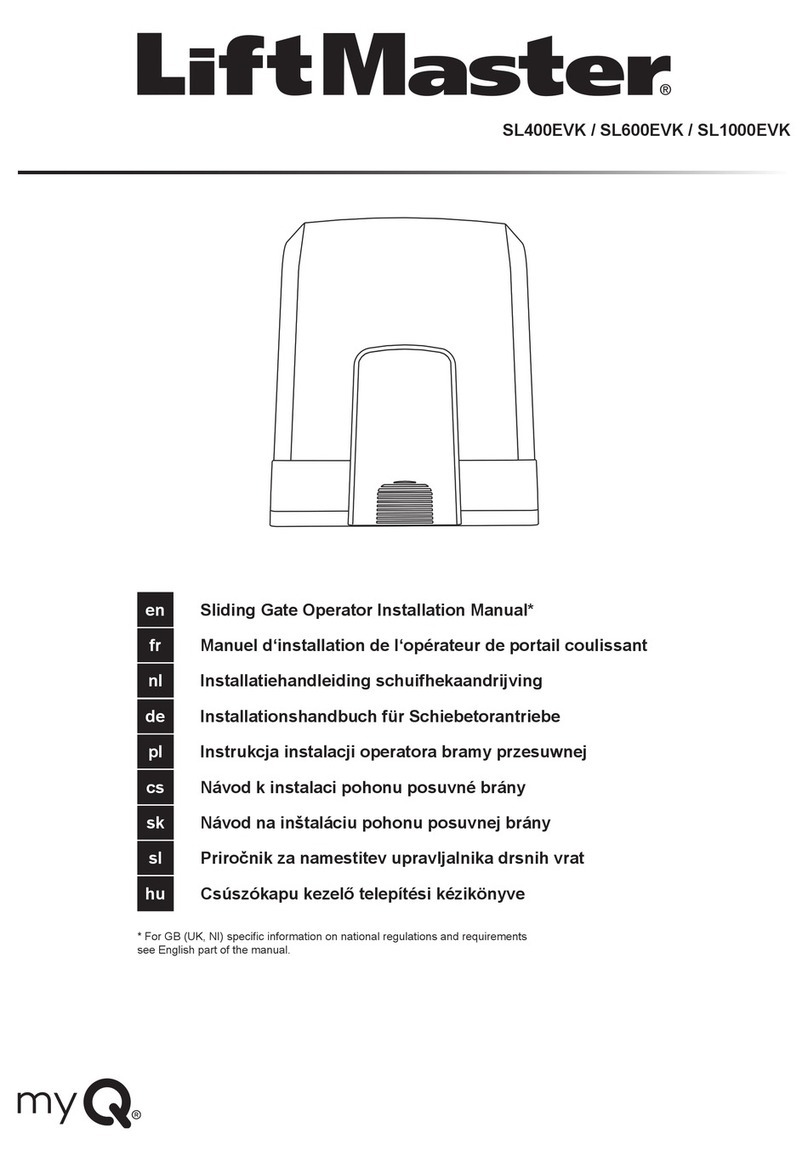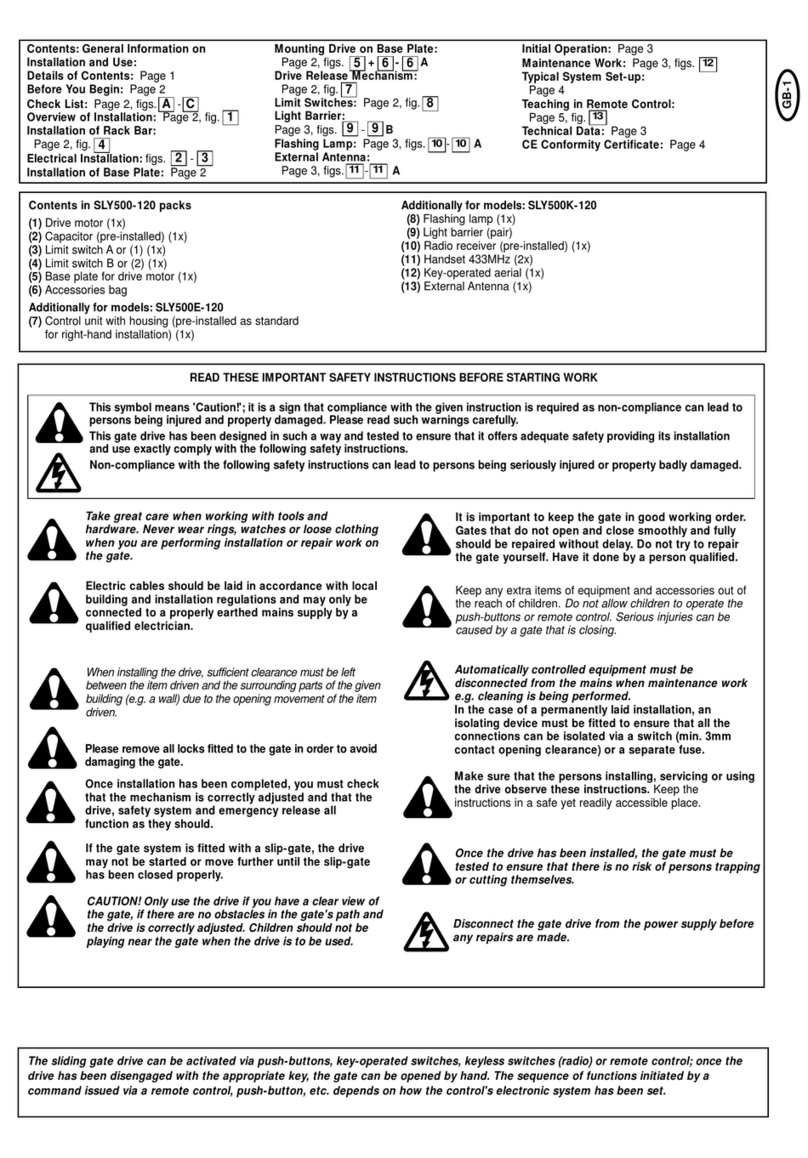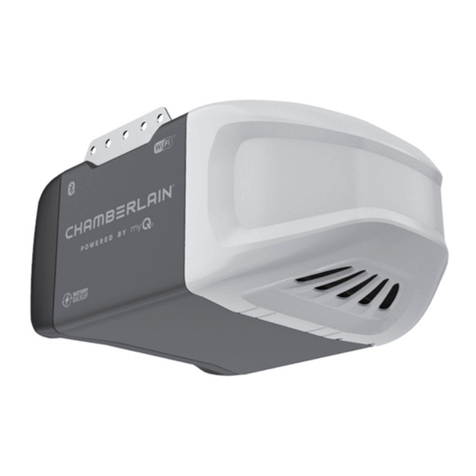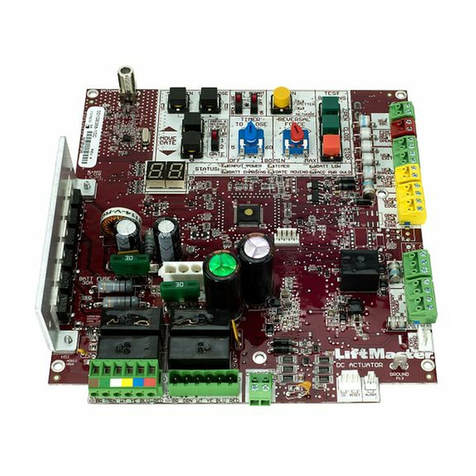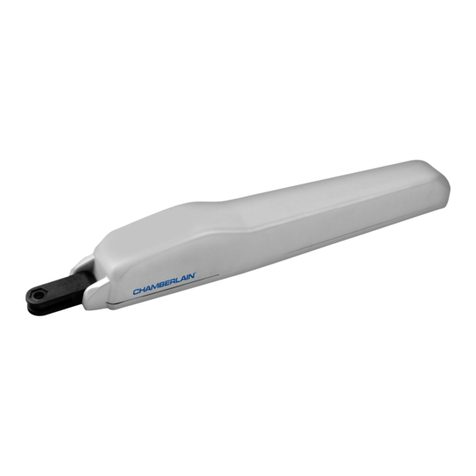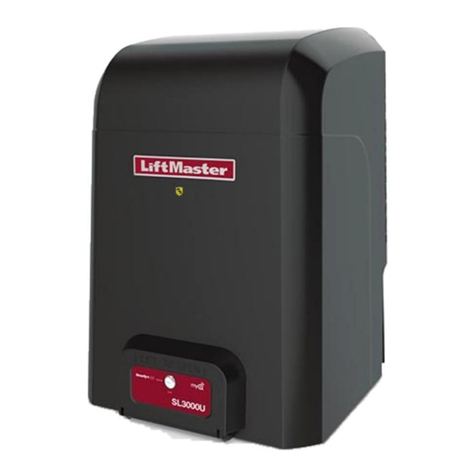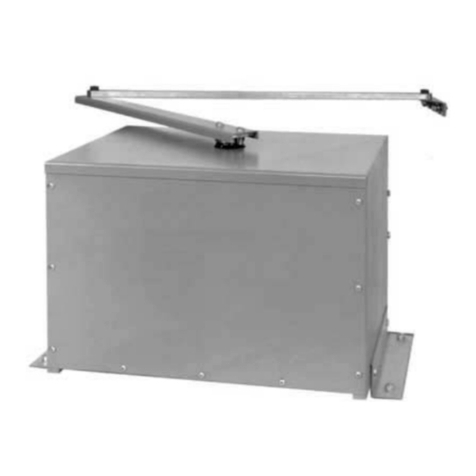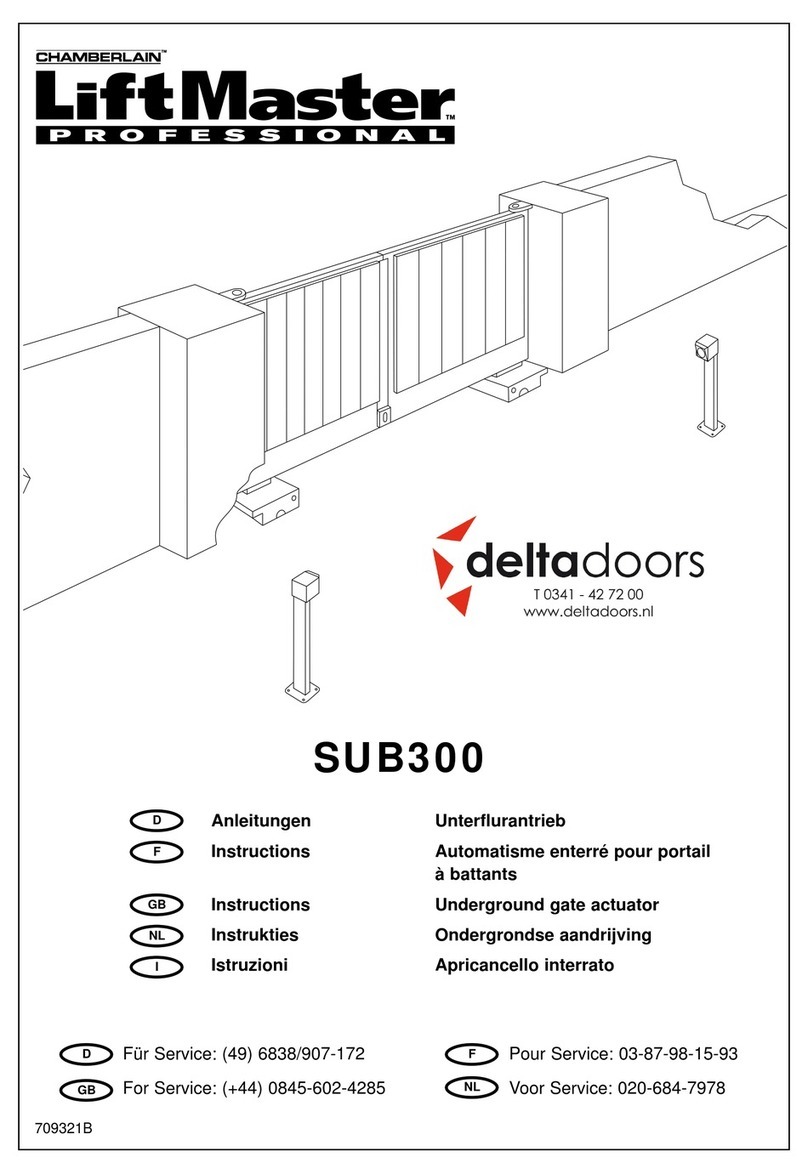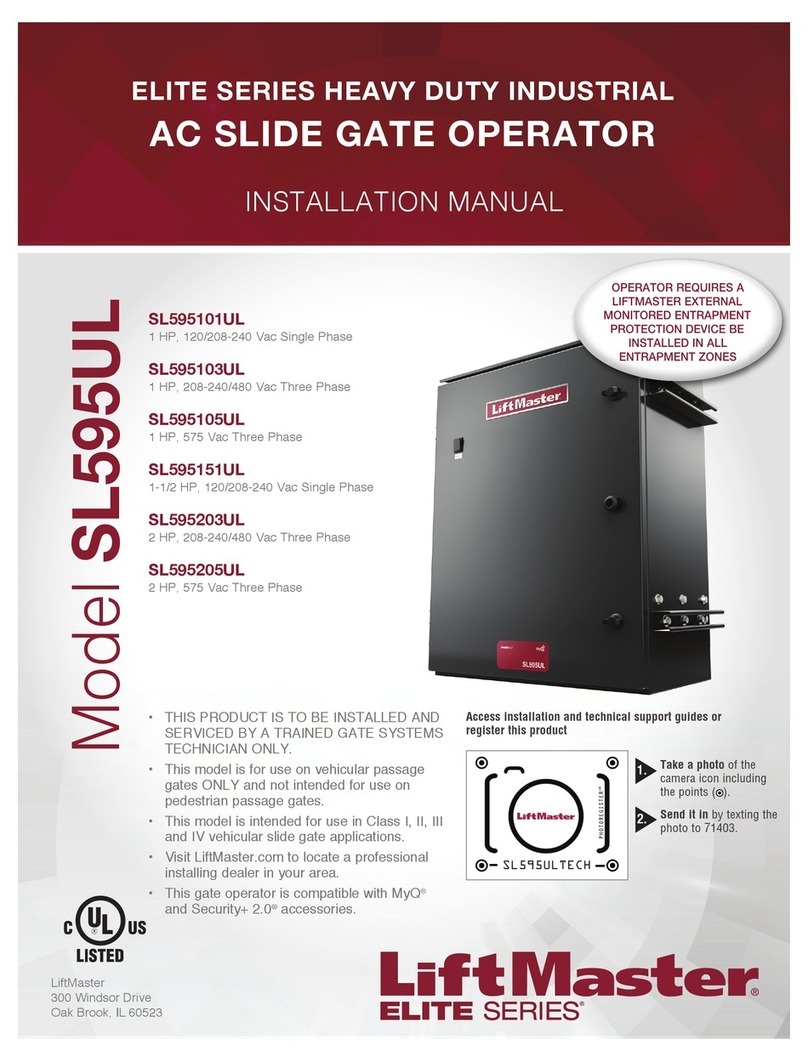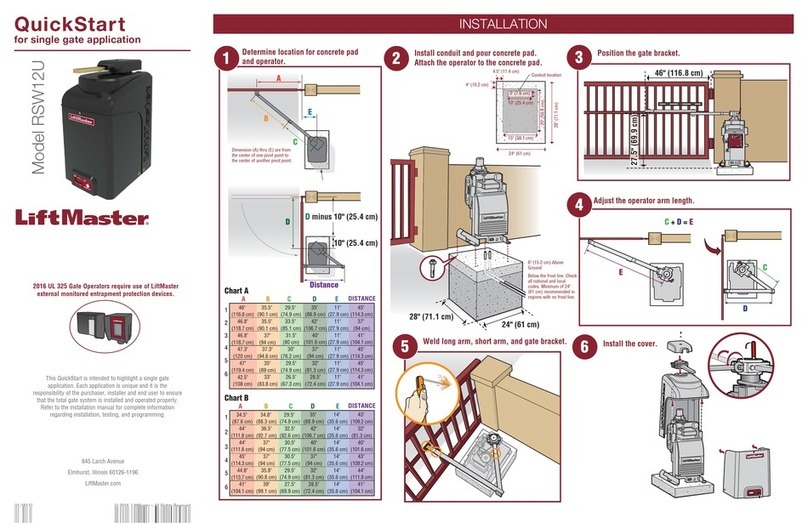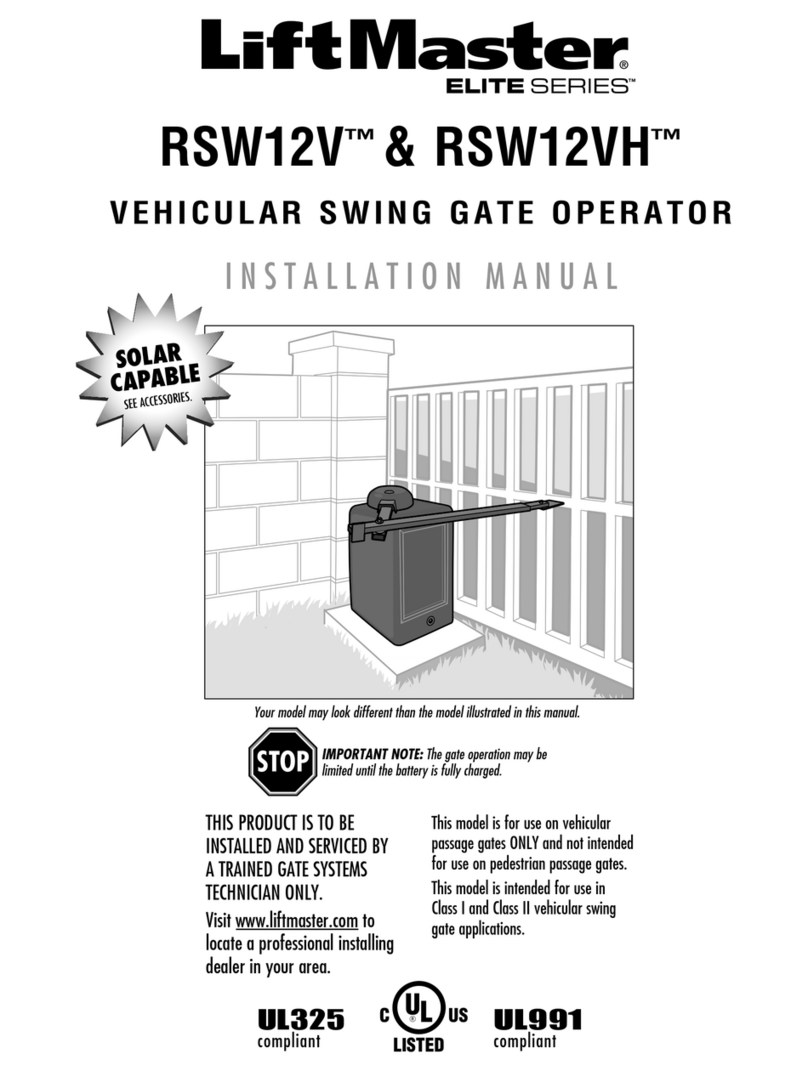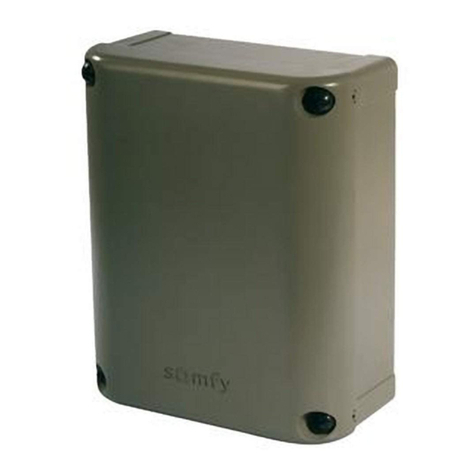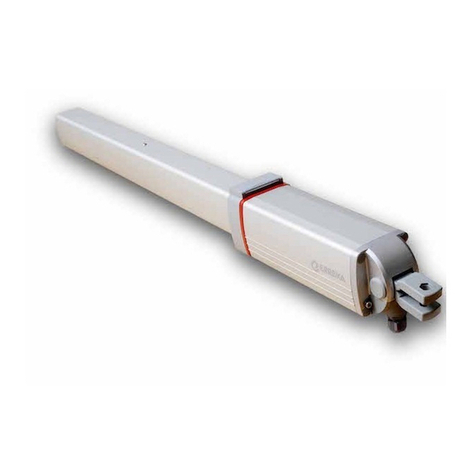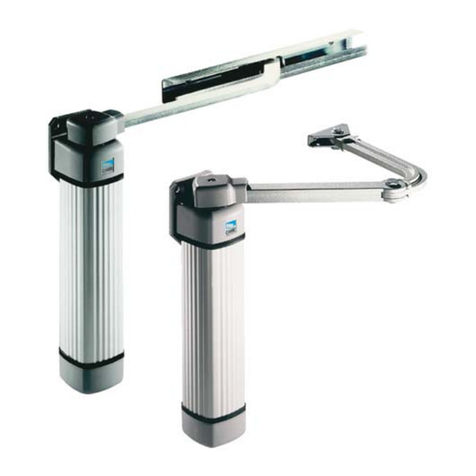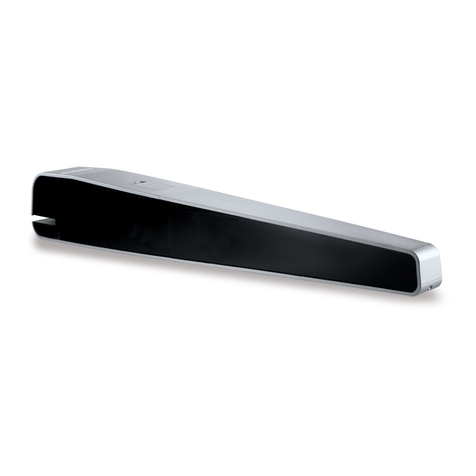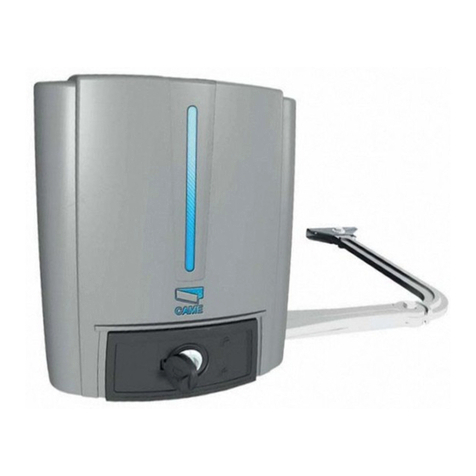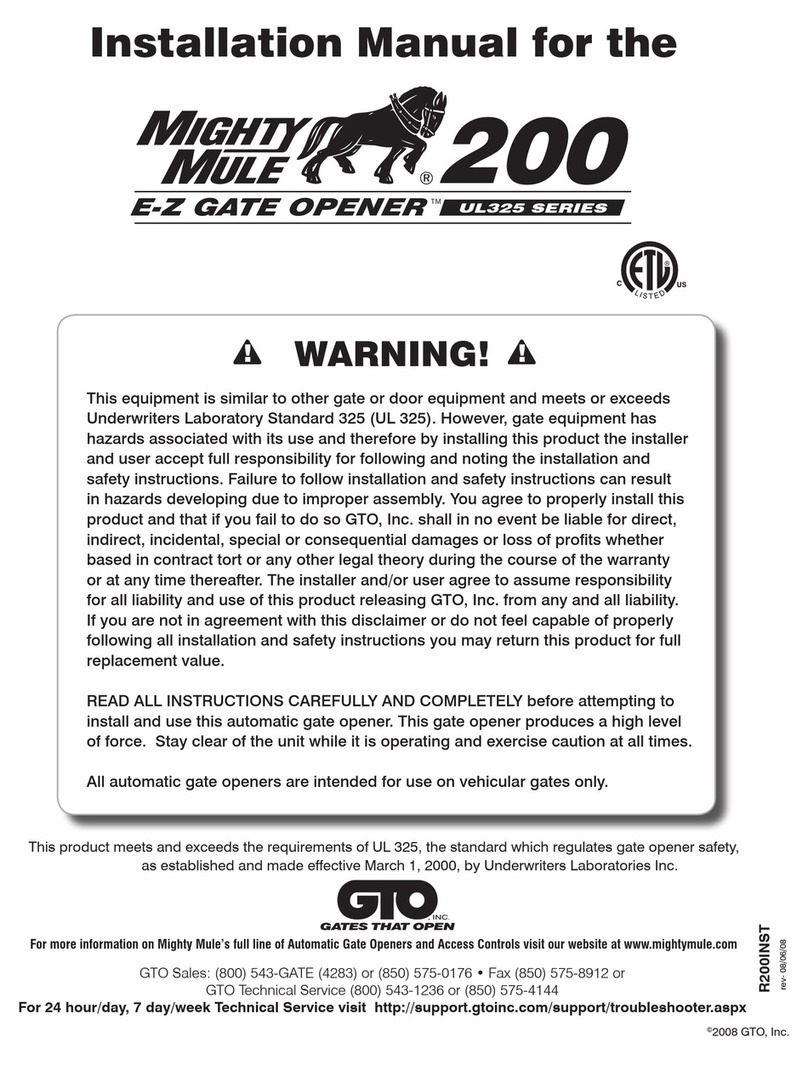
4
Safety Installation Information
1. Vehicular gate systems provide convenience and security. Gate
systems are comprised of many component parts. The gate operator is
only one component. Each gate system is specifically designed for an
individual application.
2. Gate operating system designers, installers and users must take into
account the possible hazards associated with each individual
application. Improperly designed, installed or maintained systems can
create risks for the user as well as the bystander. Gate systems design
and installation must reduce exposure to potential hazards.
3. A gate operator can create high levels of force in its function as a
component part of a gate system. Therefore, safety features must be
incorporated into every gate system design. Specific safety features
include:
•Edges Sensors (contact)
•Guards for Exposed Rollers
•Photoelectric Sensors
•Screen Mesh
•Instructional and Precautionary Signage
4. Install the gate operator only when:
a. The operator is appropriate for the construction and the usage
class of the gate.
b. All openings of a horizontal slide gate are guarded or screened
from the bottom of the gate to a minimum of 6 feet (1.8 m) above
the ground to prevent a 2-1/4 inches (6 cm) diameter sphere from
passing through the openings anywhere in the gate, and in that
portion of the adjacent fence that the gate covers in the open
position.
c. All exposed pinch points are eliminated or guarded, and guarding
is supplied for exposed rollers.
5. The gate operator is intended for installation only on gates used for
vehicles. Pedestrians must be supplied with a separate access
opening. The pedestrian access opening shall be designed to promote
pedestrian usage. Locate the pedestrian access such that persons will
not come in contact with the vehicular gate during the entire path of
travel of the vehicular gate.
6. The gate must be installed in a location so that enough clearance is
supplied between the gate and adjacent structures when opening and
closing to reduce the risk of entrapment.
7. The gate must be properly installed and work freely in both directions
prior to the installation of the gate operator.
8. Permanently mounted access controls intended for users to activate,
must be located at least 6 feet (1.8m) away from any moving part of
the gate and where the user is prevented from reaching over, under,
around or through the gate to operate the controls. Outdoor or easily
accessible controls shall have a security feature to prevent
unauthorized use. Exception: Emergency access controls only
accessible by authorized personnel (e.g. fire, police) may be placed at
any location in the line-of-sight of the gate.
9. For a gate operator utilizing a Stop and/or Reset button, it must be
located in the line-of-sight of the gate. Activation of the reset control
shall not cause the operator to start.
10. A minimum of two (2) WARNING SIGNS shall be installed in the area
of the gate. Each warning sign is to be visible by persons located on
the side of the gate on which the sign is installed.
11. For a gate operator utilizing a non-contact sensor:
a. See Install Entrapment Protection section for placement of non-
contact sensor for each type of application.
b. Care shall be exercised to reduce the risk of nuisance tripping,
such as when a vehicle trips the sensor while the gate is still
moving.
c. One or more non-contact sensors shall be located where the risk
of entrapment or obstruction exists, such as the perimeter
reachable by a moving gate or barrier.
12. For a gate operator utilizing a contact sensor such as an edge sensor:
a. One or more contact sensors shall be located where the risk of
entrapment or obstruction exists, such as at the leading edge,
trailing edge and post mounted both inside and outside of a
vehicular horizontal slide gate.
b. A hard wired contact sensor shall be located and its wiring
arranged so the communication between the sensor and the gate
operator is not subject to mechanical damage.
c. A wireless device such as one that transmits radio frequency (RF)
signals to the gate operator for entrapment protection functions
shall be located where the transmission of the signals are not
obstructed or impeded by building structures, natural landscaping
or similar obstruction. A wireless device shall function under the
intended end-use conditions.
Role of Dealers, Installers, and
Trained Gate System Technicians
•Ensure entire system being designed manufactured and installed meets
all applicable standards and codes including UL 325 and ASTM F2200.
•Demonstrate the basic functions and safety features of the gate system
to owners/end users/general contractors, including how to turn off
power and how to operate the manual disconnect feature.
•Leave safety instructions, product literature, installation manual and
maintenance manual with end user.
•Explain to the owners the importance of testing by a trained gate
system technician that includes a routine re-testing of the entire system
including the entrapment protection devices, and explain the need for
the owners to insure that this testing is performed monthly.
Role of End Users/Home Owners
•Contact a trained gate systems technician to maintain and repair the
gate system (End users should never attempt to repair the gate
system).
•Retain and utilize the installation manual and maintenance and
important safety instructions; see page 36.
•Routinely check all gate operator functions and gate movement.
•Discontinue use if safety systems operate improperly, the gate is
damaged, or the gate is difficult to move. Contact trained gate systems
technician to repair the gate system.
•Prominently display and maintain warning signs on both sides of the
gate.
SAFETY
